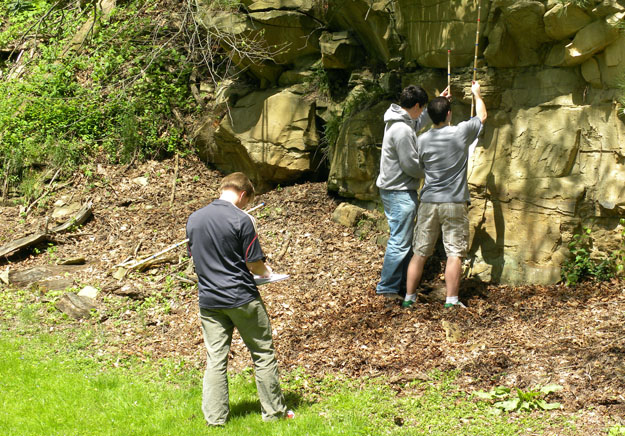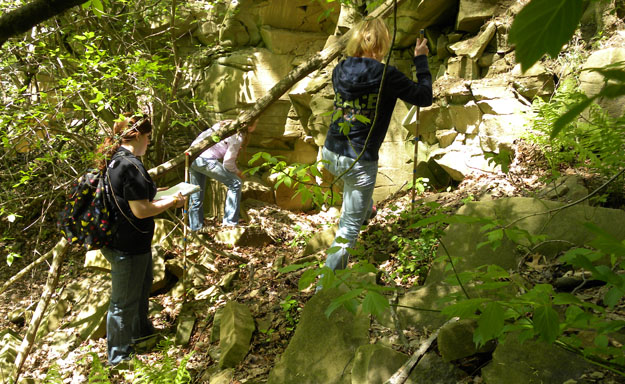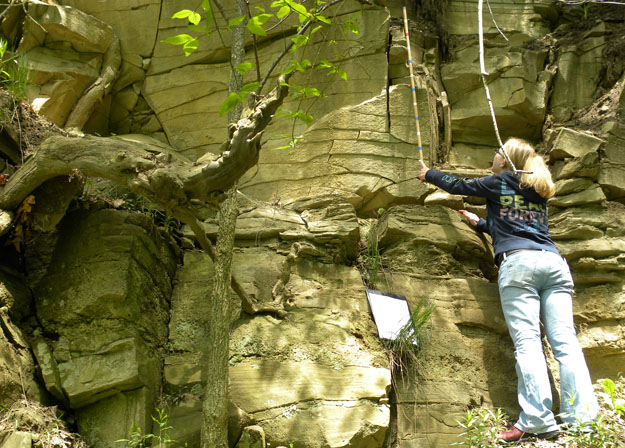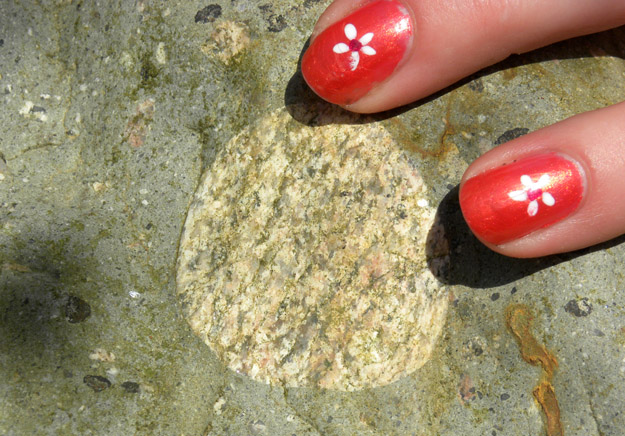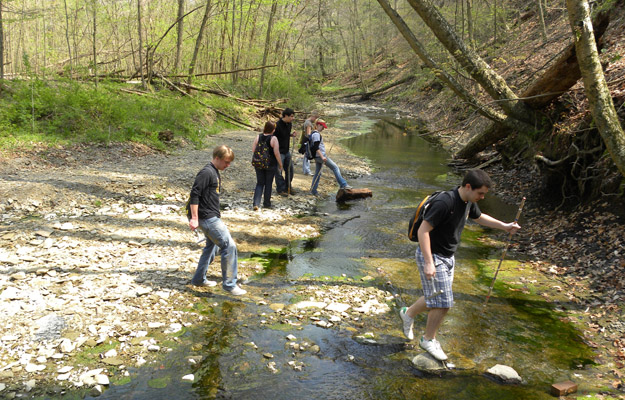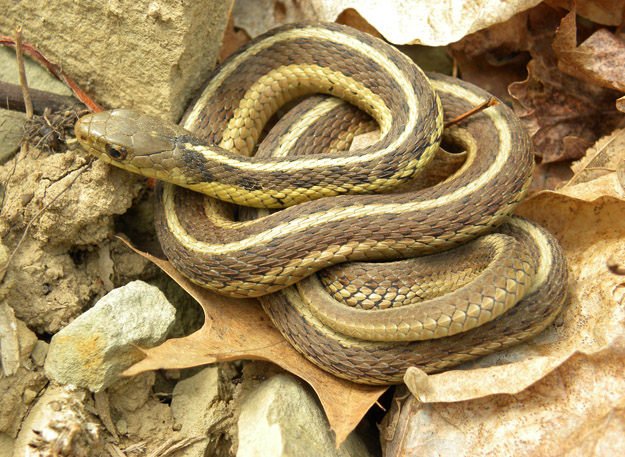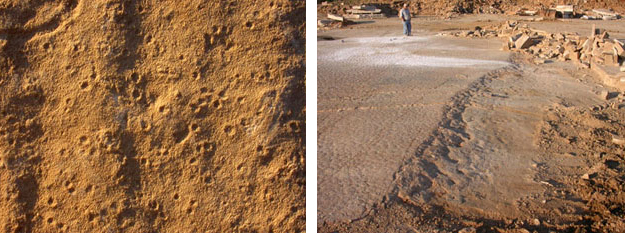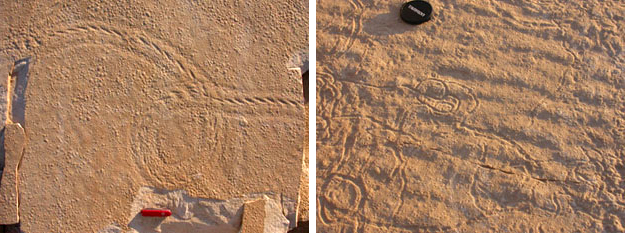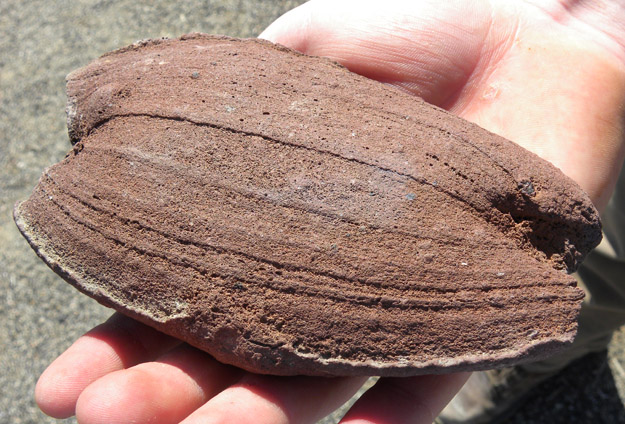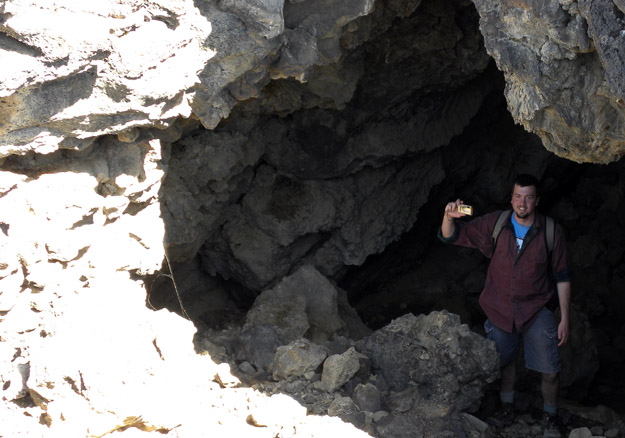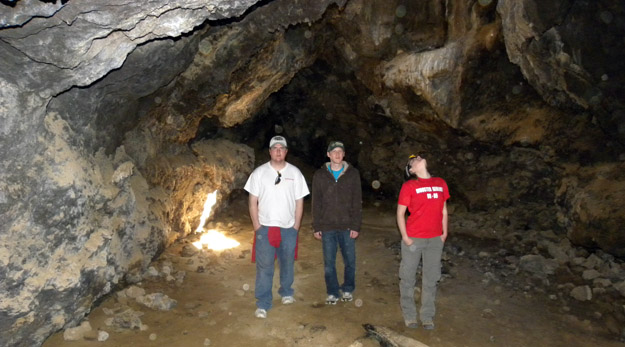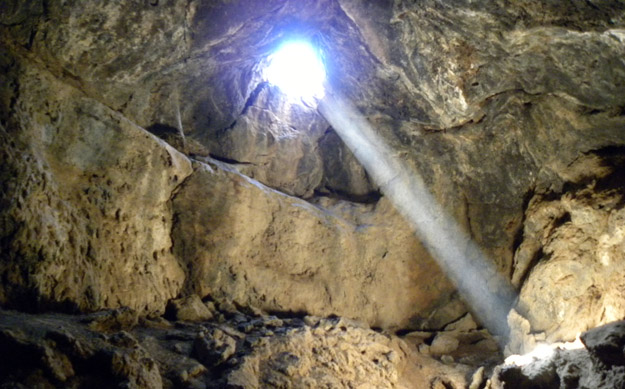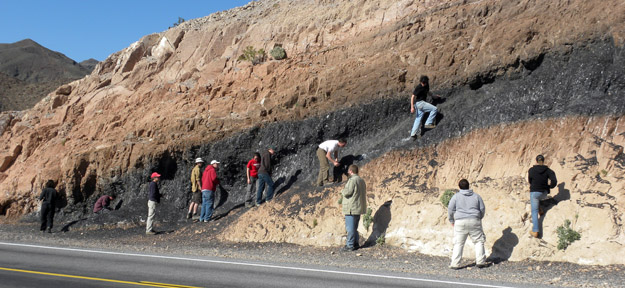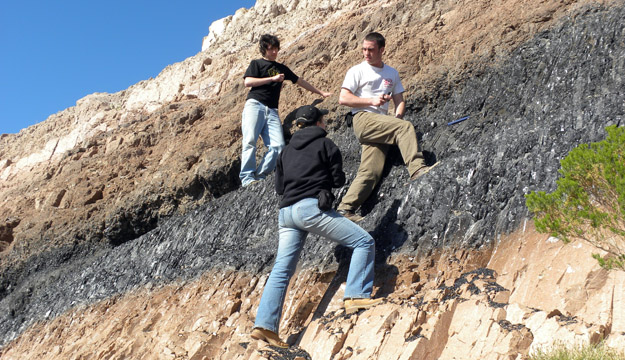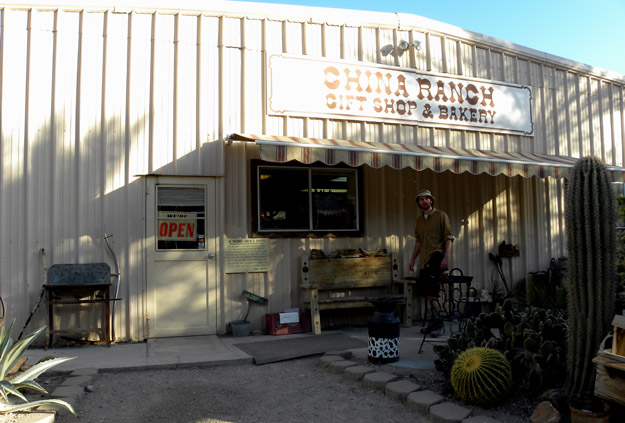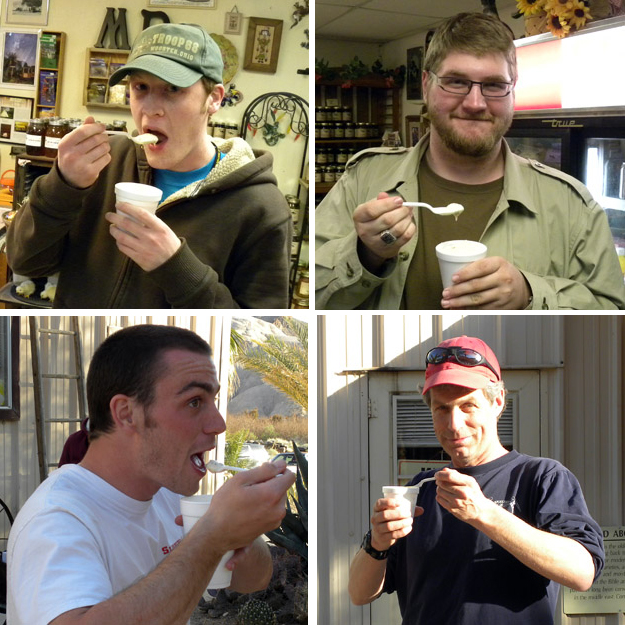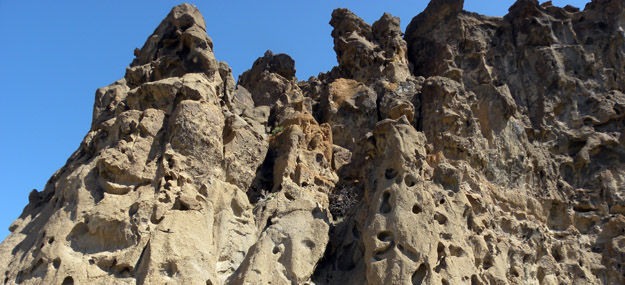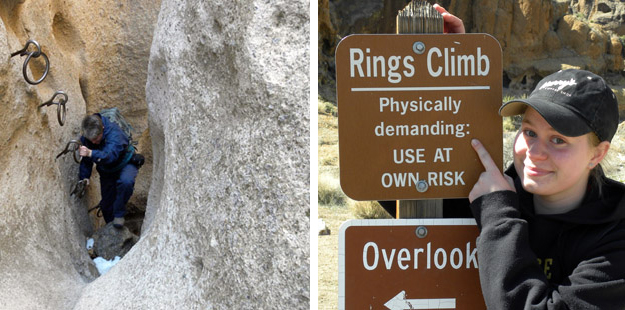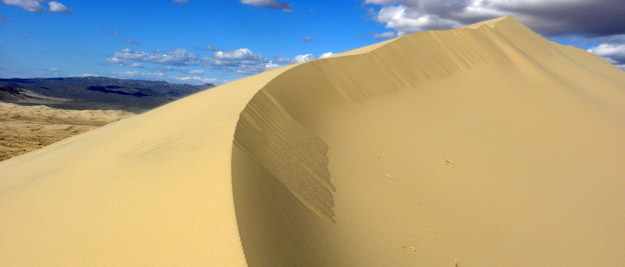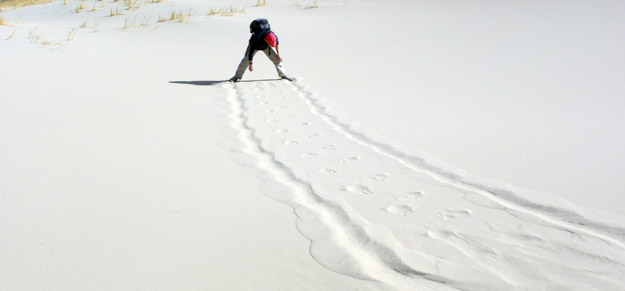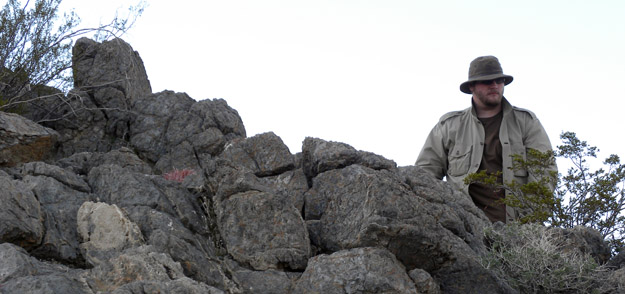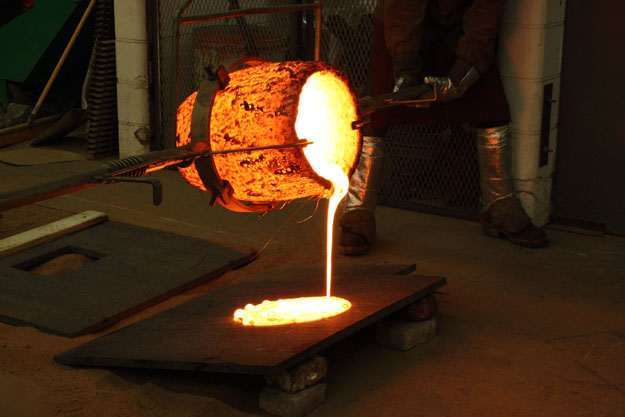
A cauldron of lava poured onto an angled surface at Syracuse University. Photograph courtesy of Jeff Karson, Department of Earth Sciences at Syracuse.
SYRACUSE, NEW YORK–Today I gave a presentation at Syracuse University as part of the fifth annual Central New York Earth Sciences Student Symposium. My topic was the rise of modern marine ecosystems in the Jurassic. Exciting enough, of course, but the real fun was in an event which caught me by surprise: a “lava pour” organized by Professor Jeff Karson with the Sculpture Department at Syracuse. (This is a type of interdisciplinarity I hadn’t seen before!)
The pour, as they call it, began with the addition of about 100 pounds of basalt (collected in Oregon where they have plenty of it) into a hardened steel cauldron. The cauldron is then lowered into a below-ground furnace and heated for about four hours until all is incandescent. Several people in protective gear (it would not protective enough for me, though!) open the furnace and attach a winch to the cauldron and lift it to the surface. At this point the crowd (including me) had been pushing as close as allowed to the furnace. We immediately backed up when the blast of heat from the cauldron — which was glowing like the sun — struck us. Molten rock is serious stuff.
A bit of the lava was first poured into a porcelain pipe bent like an elbow with the lower part ending in a large basin of water. The pipe had been plugged at the base with wax so the lava would build up before flowing through to the water. The idea was to make a lava pillow, a type of flow structure made when a natural flow meets water as under a glacier, in a lake or in the ocean. (See the natural pillow lavas studied last summer by the Wooster Iceland Team.) The wax immediately and explosively ignited, sending a spout of flame upwards which took everyone by surprise (including the crew). The fire was short-lived, though, as the lava flowed through into the now-boiling water.
The second pour was onto a cold rock monitored by a digital remote thermometer to record its cooling rate. This time the lava poured out like syrup, making a flat, bubbling sheet which quickly grew a dark crust which spattered tiny glass shards as the cooling bubbles burst.
The third and final pour was onto blocks of dry ice, apparently to simulate the surface of Mars. (Really. Not just to “see what happens”. This is professional geology, after all!) The lava hit the dry ice with an extraordinary hiss and then skittered off onto the sand below. Apparently the vapor built up immediately by the rapidly-sublimating ice did not allow the lava to stick or even stay on the ice itself. The result was ropy strings, droplets and “angel hair” of cooled lava.
Afterwards, when the cauldron had been scrapped empty and the heat had dropped to a tolerable level, we gathered around the three pour sites and marveled. The flow on the rock slab continued to bubble and crack, producing some exquisite brown fragments of almost-transparent glass. We picked up a few cooled pieces and tried to imagine this process scaled up to natural proportions.
Thank you to Jeff Karson for such an innovative idea, this lava pour, and sharing it with all of us. Way cool. Mike Cheatham has posted a webpage of photos showing our lava pour in its stages.

